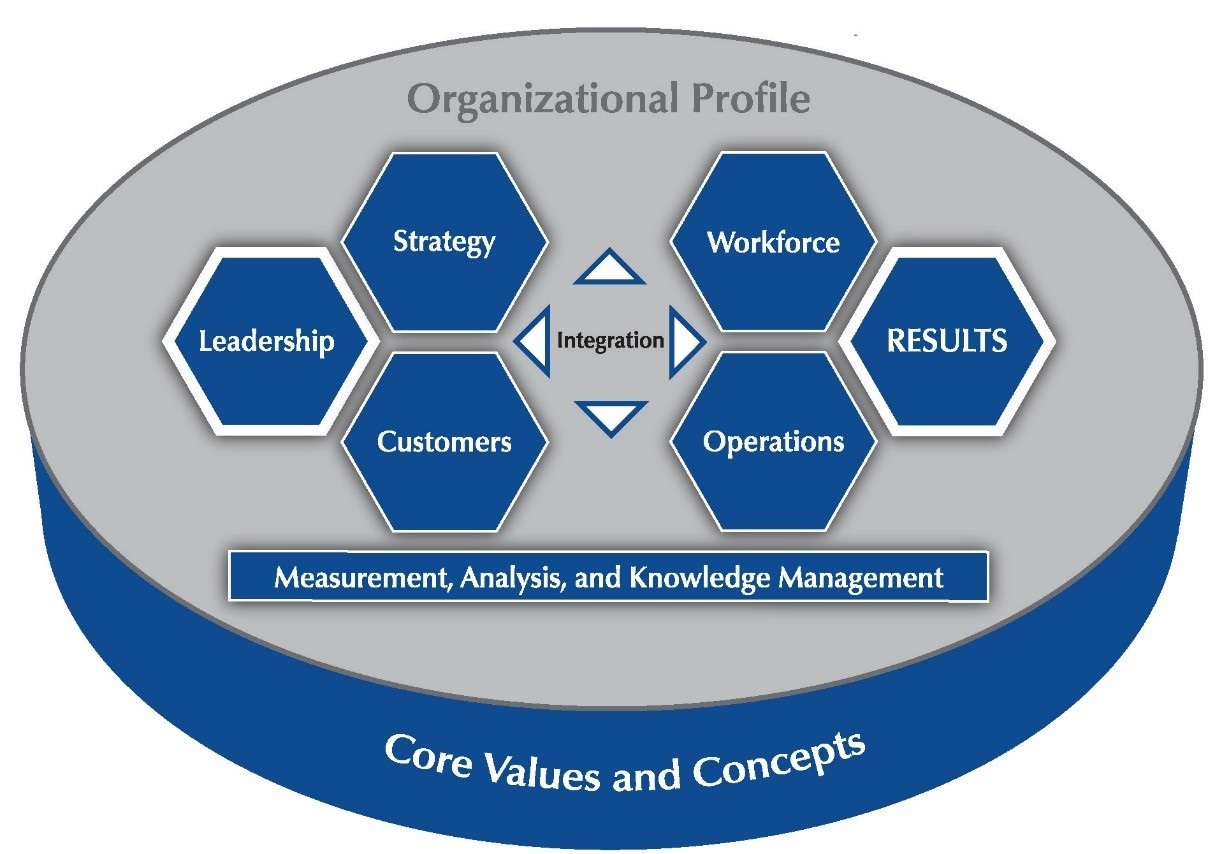Business Excellence
Business Excellence Self-Assessment System Implementation

Steps recommended by EFQM (2014) for self-assessments

The EFQM Business Excellence Criteria and Weightings
(European Foundation for Quality Management 2014)

Malcolm Baldrige National Quality Award (MBNQA) Model
(NIST 2017)
In more than six decades since its birth, Business Eximages/Selef-assessment steps.pngcellence has achieved glorious results. BE has been supported and recommended by several long-standing corporations, such as Nestle, KLM, BMW, TNT, Electrolux, Philips, Daimler-Chrysler, Siemens, Bosch, etc. BE has also been identified as the motivating force for Japanese post-war industries. Most importantly, several researchers have found that companies with higher Business Excellence scores and award winners outperform other companies.
Business Excellence model is a set of criteria and scoring logic “that can be used in a number of different ways, namely as a self-assessment tool, a way to benchmark with other organisations and a guide to identify areas for improvement”. Business Excellence models can quantify the excellence of organisations regardless of their size and industrial sector. Organisations choose and utilise a Business Excellence model as a diagnostic tool and to find the points for improvement and provide a roadmap for their journey toward excellence. Business Excellence models provide a comprehensive view of the organisation and prioritise the improvements they need to make. The Deming (Japan), EFQM (European Foundation for Quality Management) and the Malcolm Baldrige (USA) are the most popular Business Excellence models in the world and tens of thousands of organisations around the globe use them on their journey toward excellence.
The journey toward Business Excellence begins with defining or selecting a model and then conducting a self-assessment using that model’s criteria. Self-assessment is similar to a health check, where an initial analysis against the criteria provides information and evidence on the basis of which improvements can be made. The figure on the top shows the steps recommended by the EFQM (2014) for a successful self-assessment and demonstrates that the journey towards Business Excellence involves several activities. Conducting such activities requires a leader, initial planning, resource provision, execution, monitoring, continuous review and improvement. Activities start from organising and training teams of managers and employees to conduct a self-assessment, provide comprehensive feedback and, most importantly, to follow up with improvement projects. Hence, efforts made under the name of Business Excellence cannot be called Business Excellence activities without following a certain Business Excellence model and conducting self-assessments.
For more information, please submit your details in the contact form below, and we will contact you very soon.
